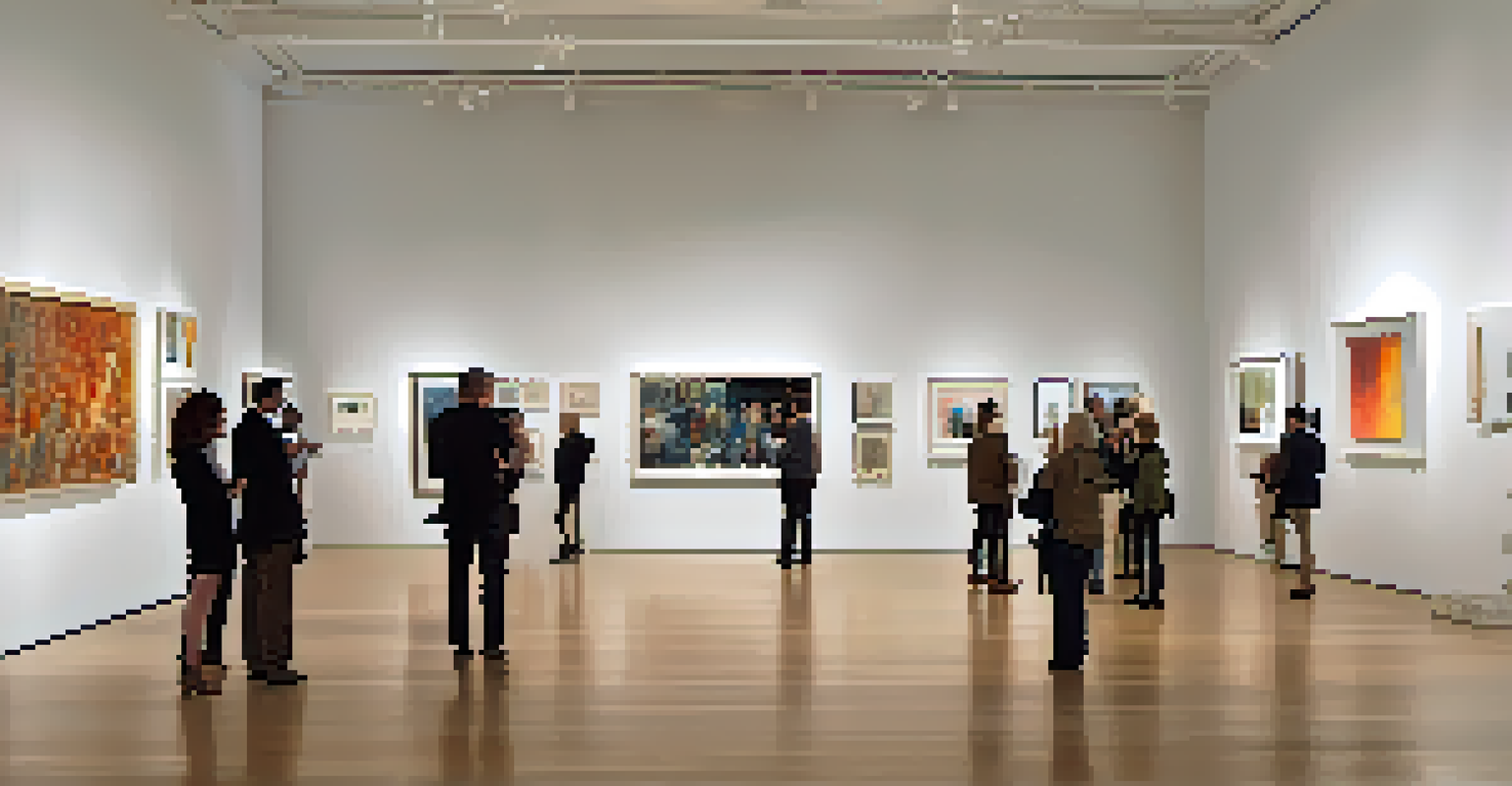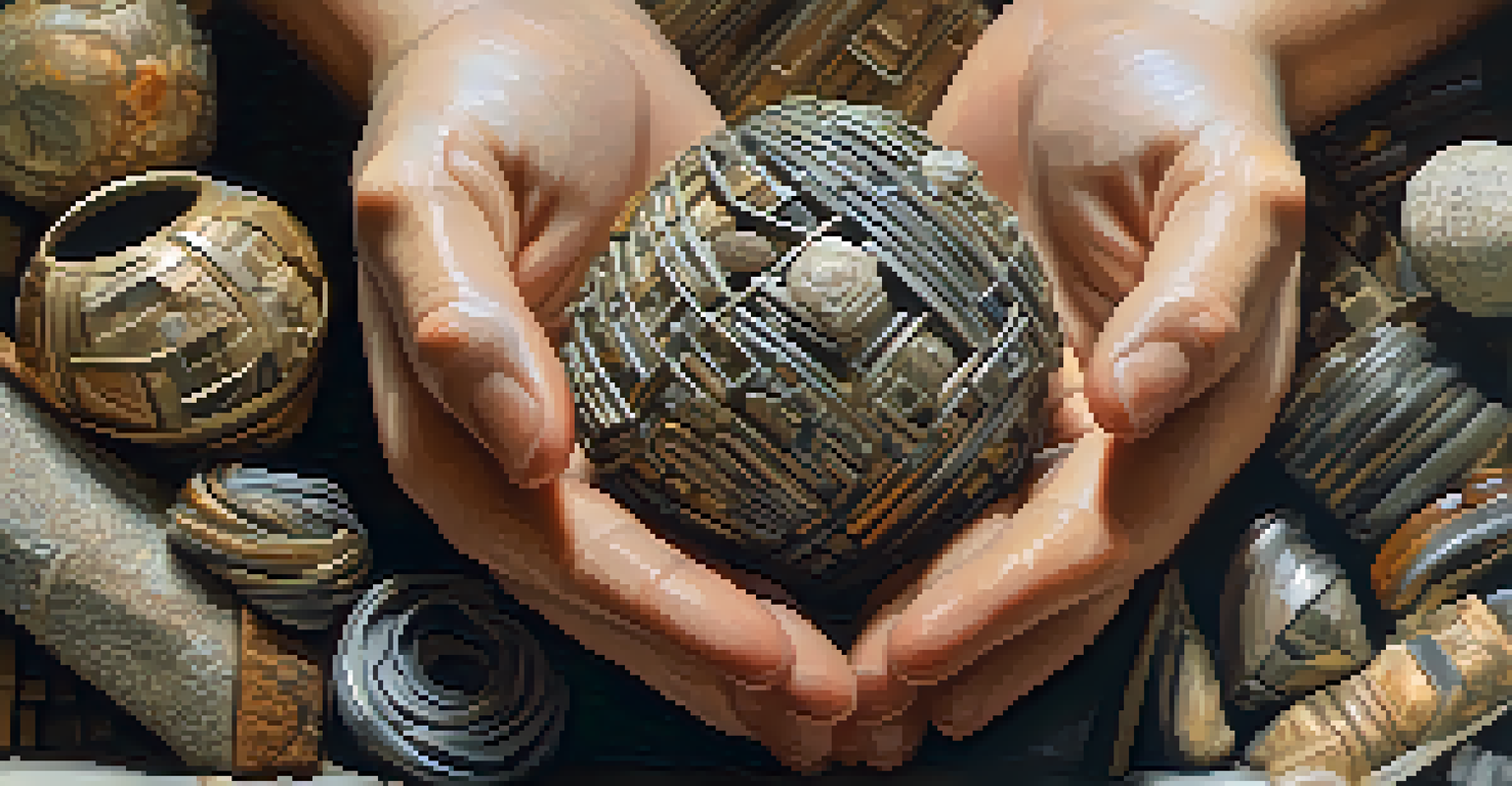The Psychology Behind Art Collecting: A Collector's Mindset

The Allure of Art: Why We Collect
Art collecting is often driven by a deep emotional connection. For many, art pieces resonate with personal experiences, memories, or aspirations, making the act of collecting not just a hobby but a meaningful endeavor.
Art is not freedom from discipline, but disciplined freedom.
This emotional investment often transforms a simple collection into a narrative of one’s life. Each piece can symbolize a particular moment or feeling, creating a tapestry of memories that collectors cherish.
Moreover, the aesthetic appeal of art can evoke joy and inspire creativity. The thrill of finding that perfect piece is akin to discovering a treasure, fueling collectors' passion to seek more.
The Psychological Benefits of Art Collecting
Collecting art provides several psychological benefits, including a sense of achievement and fulfillment. Owning unique pieces can enhance self-esteem, giving collectors a sense of identity and status within their community.

Additionally, the process of curating a collection can be meditative. The focus required to select, acquire, and display art can serve as a form of mindfulness, providing a break from daily stressors.
Art Collecting Reflects Identity
Many collectors curate their art collections to express personal beliefs and cultural heritage, making it an extension of themselves.
The social aspect of collecting also plays a crucial role in mental well-being. Engaging with other collectors, attending galleries, or participating in exhibitions fosters connections and a sense of belonging.
The Role of Identity in Art Collecting
For many collectors, their art collection is a reflection of their identity. It can express personal beliefs, cultural heritage, and individual tastes, acting as an extension of oneself.
The only time I feel alive is when I'm painting.
This connection often leads collectors to seek art that resonates with their values or aspirations. For instance, someone passionate about sustainability may gravitate toward eco-friendly artists or themes.
Moreover, the desire to showcase a collection can also influence one's social identity. Sharing art with others can affirm a collector’s place in certain social circles, reinforcing their identity as a connoisseur.
The Influence of Trends on Collecting Behavior
Art collecting is not immune to trends, which can significantly influence what collectors pursue. Just as fashion evolves, so does the art world, often leading collectors to align their purchases with current popular styles.
This trend-driven behavior can create a sense of urgency, pushing collectors to acquire pieces before they become unattainable. The fear of missing out (FOMO) often propels collectors into action, sometimes leading to impulsive decisions.
Emotional Bonds Influence Choices
Emotional attachment to artworks often drives collectors' purchasing decisions, enriching their experience beyond market trends.
However, while trends can guide collecting choices, genuine passion should always be the foundation. Collectors who prioritize personal connection over fleeting trends often build more meaningful collections.
Investment vs. Passion: The Collector's Dilemma
One of the ongoing debates in the art world is the balance between viewing art as an investment versus a passion. Many collectors enter the market with the hope that their pieces will appreciate in value, treating art as a financial asset.
Yet, the best collectors understand that true passion often trumps monetary gain. When collecting becomes purely transactional, it can strip away the joy of discovery and connection that art offers.
Ultimately, a healthy balance between investment and passion can lead to a fulfilling collecting experience. Embracing both aspects allows collectors to enjoy their art while still considering its financial implications.
The Impact of Emotional Attachment on Collecting
Emotional attachment plays a significant role in art collecting, often influencing purchasing decisions. Collectors may feel a bond with certain artists or artworks, leading them to acquire pieces that resonate deeply with their personal experiences.
This attachment can sometimes cloud judgment, causing collectors to overlook market trends or the potential resale value of their art. However, this emotional investment also enriches the collecting experience, making each piece unique.
Legacy Through Art Collections
Collectors often seek to build a legacy by curating pieces that reflect their passions and values for future generations.
The stories behind each acquisition can enhance this attachment, transforming artworks into cherished memories. This connection often leads collectors to prioritize sentiment over market trends.
Building a Legacy Through Art Collecting
For many collectors, the idea of leaving behind a legacy is a significant motivator. Art collections often serve as a means to pass down personal history and cultural values to future generations.
Understanding the emotional weight of their collection, many collectors are intentional about curating pieces that tell a story, ensuring that their legacy reflects their passions and beliefs.

Moreover, establishing a legacy through art can inspire future collectors or artists. By sharing their journey, collectors can cultivate a community that values art, creativity, and history.